Text
Biodegradable Polythene: Driving Positive Environmental Change

As the world faces the challenges of plastic pollution and environmental degradation, the search for sustainable alternatives has become more urgent than ever.
Biodegradable polythene, also known as biodegradable plastic, is emerging as a promising solution to these pressing environmental concerns.
Understanding Biodegradable Polythene
Biodegradable polythene is a type of plastic that is designed to degrade naturally in the environment under specific conditions, such as exposure to sunlight, heat, and moisture. Unlike conventional polythene, which can persist in the environment for hundreds of years, biodegradable polythene breaks down into natural elements, reducing its impact on ecosystems and wildlife.
The production of biodegradable polythene can be achieved using various methods, including incorporating bio-based materials derived from renewable sources like corn, sugarcane, or coffee grounds. These plant-based feedstocks enable a more sustainable supply chain and contribute to a circular economy.
Some bio-based polyethylene examples such as coffee based, rice husk-based,...
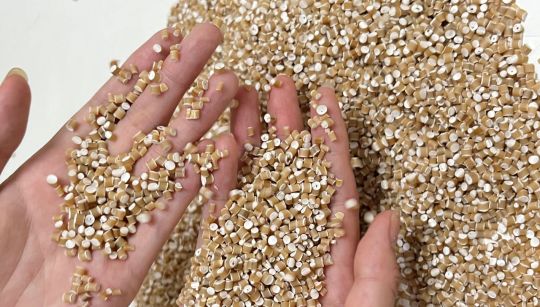
Rice husk-based polyethylene
Positive Impact on the Environment
Biodegradable polythene offers several significant benefits that drive positive environmental change:
1. Reduced Plastic Pollution
One of the most significant advantages of biodegradable polythene is its ability to degrade naturally, significantly reducing plastic pollution. When disposed of properly and exposed to the right environmental conditions, biodegradable polythene breaks down into harmless natural substances, minimizing its long-term presence in landfills, oceans, and natural habitats.
2. Conservation of Resources
The production of biodegradable polythene from renewable plant-based sources conserves valuable resources. By reducing our dependence on fossil fuels, which are finite and contribute to greenhouse gas emissions, we can make strides towards a more sustainable and environmentally responsible future.
3. Mitigating Harm to Wildlife
Conventional polythene can pose severe risks to wildlife, as animals often mistake plastic debris for food or become entangled in plastic waste. Biodegradable polythene offers a safer alternative, as it degrades into non-toxic components, minimizing harm to marine life, birds, and other animals.

4. Positive Influence on Consumer Behavior
The adoption of biodegradable polythene can also have a positive influence on consumer behavior. As people become more aware of environmental issues, they are increasingly seeking sustainable products and packaging options. Businesses that embrace biodegradable polythene demonstrate their commitment to environmental responsibility and can attract environmentally conscious consumers.
Applications of Biodegradable Polythene
Biodegradable polythene has a wide range of applications across various industries:
1. Packaging
Biodegradable polythene is used in packaging for various products, including food, beverages, and consumer goods. By utilizing biodegradable packaging, companies can reduce their environmental footprint and offer more sustainable choices to consumers.
Learn more at: Bioplastics in Packaging: A Win-Win for the Environment and Businesses
2. Agriculture
Biodegradable polythene films are also employed in agriculture as mulch films and agricultural covers. These films can help improve soil health, moisture retention, and weed control while breaking down naturally after use, leaving no harmful residues.
3. Medical and Healthcare
In the medical and healthcare sector, biodegradable polythene can be used for single-use items, such as gloves, aprons, and medical packaging. Its eco-friendly properties contribute to safer and more sustainable healthcare practices.
You can explore various types of bio-based polyethylene at: AirX - a company specializes in the production of bio-based composites from recycled carbohydrates derived by-products, including coffee grounds, coconut husk, sugarcane bagasse, and bamboo.
#eco friendly#carbon footprint#bio-based#polyethylene#green materials#green#net zero#bio-based polyethylene#environment#pollution
0 notes
Text
How to Choose the Best Polyethylene Packaging Options for Your Products

Polyethylene packaging is widely used across various industries for its versatility, durability, and cost-effectiveness. However, with different types and variations of polyethylene available, choosing the best packaging option for your products can be a challenging task.
1. Understand the Types of Polyethylene
Polyethylene comes in different forms, each with its unique properties and applications. The two most common types are Low-Density Polyethylene (LDPE) and High-Density Polyethylene (HDPE).
LDPE: LDPE is known for its flexibility, transparency, and excellent moisture resistance. It is commonly used for packaging applications such as bags, films, and liners. LDPE is ideal for products that require flexibility and protection against moisture and light exposure.
HDPE: HDPE, on the other hand, offers greater strength, stiffness, and impact resistance. It is used for applications that require more robust packaging, such as containers, bottles, and rigid packaging. HDPE is well-suited for products that need durability, chemical resistance, and structural integrity.
Understanding the differences between LDPE and HDPE will help you determine which type of polyethylene packaging is most suitable for your specific product requirements.
Polyethylene material examples:
Rice-based polyethylene

2. Rice husk-based polyethylene
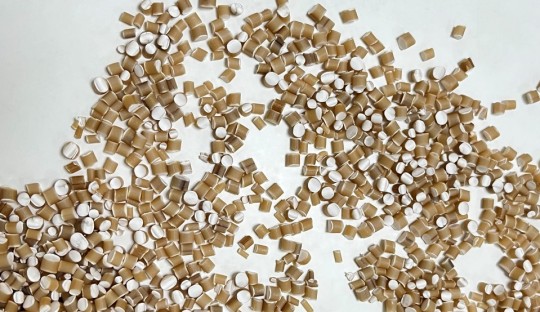
2. Consider the Product Characteristics: When choosing polyethylene packaging, it's essential to consider the characteristics of your products. Factors to take into account include:
Size and Weight
Sensitivity to Moisture or Light
Chemical Compatibility
By considering these product-specific characteristics, you can select polyethylene packaging that offers optimal protection and preservation for your goods.
3. Environmental Considerations
As environmental awareness grows, many companies are seeking sustainable packaging options. When choosing polyethylene packaging, consider the environmental impact and sustainability aspects:
Recyclability
Biodegradability
Life Cycle Assessment
4. Packaging Design and Functionality
Lastly, consider the design and functionality of the polyethylene packaging to ensure it meets your specific packaging requirements:
Shape and Size: Customizable packaging options can provide a better fit and reduce material waste.
Closure and Sealing: Evaluate the closure and sealing mechanisms of the packaging, ensuring they are secure and suitable for your products.
Branding and Marketing: Polyethylene packaging can be customized with printing, labeling, or embossing to enhance your brand's visibility and appeal.
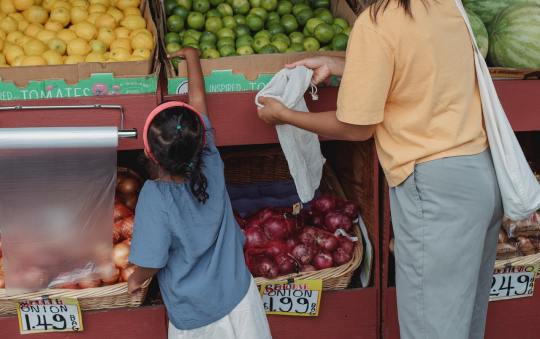
Choosing the best polyethylene packaging for your products involves careful consideration of various factors, including the types of polyethylene, product characteristics, environmental considerations, and packaging design.
Remember, the right polyethylene packaging will not only enhance the appeal and functionality of your products but also contribute to a positive customer experience and a more sustainable business approach.
#bio-based#bio-based polyethylene#eco friendly#carbon footprint#carbon neutral#carbon negative#green materials#packaging
0 notes
Text
Transforming the Textile Industry with Plant-Based Materials
The textile industry, known for its significant environmental impact, is undergoing a paradigm shift towards sustainability. Amidst this transformation, plant-based materials have emerged as a game-changer, offering a renewable and eco-friendly alternative to traditional textile production.
With their unique properties and benefits, these materials are revolutionizing the way fabrics are created, making the textile industry greener and more responsible.
Understanding Plant-Based Textile Materials
Plant-based textile materials, also known as bio-based textiles, are derived from renewable resources found in nature. Instead of relying on non-renewable fossil fuels, these materials harness the power of plants, making them a more sustainable choice. They can be sourced from various plant-based feedstocks, such as cotton, hemp, bamboo, and other cellulose-based fibers.
Plant-based materials
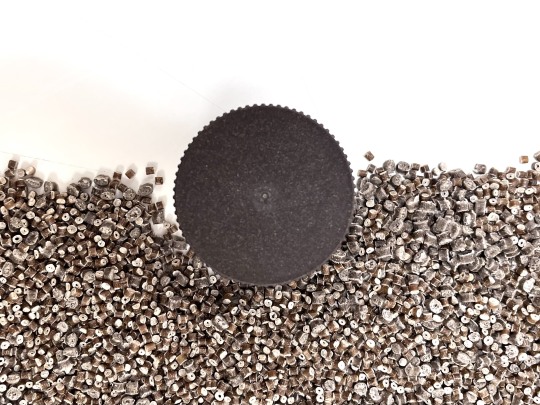
Let's explore the characteristics that make plant-based materials a remarkable choice for the textile industry:
Sustainability: Plant-based materials are renewable, as they come from plants that can be cultivated and grown repeatedly. This reduces the reliance on finite resources and helps preserve the environment.
Reduced Environmental Impact: Compared to traditional textiles, plant-based materials have a lower carbon footprint. Their production involves fewer greenhouse gas emissions and consumes less energy, minimizing the industry's impact on climate change.
Biodegradability: Many plant-based textiles are biodegradable, meaning they can naturally break down over time through biological processes. This ensures a more circular approach to textile production and reduces waste accumulation.
Comfort and Performance: Plant-based materials offer excellent comfort and performance properties. They are breathable, moisture-wicking, and often hypoallergenic, making them ideal for a wide range of textile applications.
Versatility: Plant-based textiles can be engineered to possess specific characteristics suitable for different types of fabrics, ranging from lightweight and soft materials to more durable and robust ones.
Revolutionizing the Textile Industry
The textile industry is embracing plant-based materials as a sustainable alternative, revolutionizing the way fabrics are produced and used. Here are some key areas where these materials are making a significant impact:
Clothing and Apparel: Plant-based textiles are being used to create sustainable clothing and apparel. Fabrics like organic cotton, linen, and hemp offer a natural and eco-friendly choice for fashion brands and conscious consumers. These materials not only reduce environmental impact but also provide comfort and style.
Activewear and Sports Apparel: Plant-based textiles are finding applications in activewear and sports apparel. Their moisture-wicking properties and breathability make them suitable for athletic activities, while their sustainable nature aligns with the growing demand for eco-conscious sportswear.
Home Textiles: Plant-based materials are transforming the home textile industry. From bedding and towels to upholstery and curtains, sustainable fabrics like bamboo and organic cotton offer a greener option for enhancing the comfort and aesthetics of homes.
Technical Textiles: Plant-based materials are also making strides in the field of technical textiles. These textiles are engineered for specific functions, such as flame resistance, UV protection, and antibacterial properties. By incorporating plant-based materials, technical textiles become more sustainable without compromising performance.
Luxury and High-End Fashion: Plant-based materials are even making their way into the luxury and high-end fashion market. Sustainable luxury brands are incorporating innovative plant-based textiles to offer environmentally conscious alternatives to traditional luxury materials, catering to consumers' demand for ethical and sustainable fashion.
The Future of Plant-Based Textiles
As the demand for sustainable textiles continues to rise, research and innovation in plant-based materials are accelerating. Scientists, designers, and textile manufacturers are exploring new methods to enhance the properties and versatility of these materials. This includes developing new plant-based fibers, improving dyeing and finishing processes, and advancing recycling and circular economy initiatives within the industry.
In addition to technological advancements, consumer awareness and demand play a crucial role in shaping the future of plant-based textiles. By choosing sustainable and eco-friendly clothing options, consumers can drive the adoption of plant-based materials and encourage further innovation in the textile industry.
More inovation plant-based materials at: airxcarbon.com
0 notes
Text
The Surge of Bio-Derived Polyethylene: Pioneering Sustainability in the Packaging Industry

In recent times, the pursuit of sustainability has taken center stage in various industries, with the packaging sector being no exception. Fueled by growing global concerns for environmental preservation, the advent of bio-derived polyethylene has captured significant attention as a viable sustainable solution.
Catering to the Call for Sustainable Packaging
As the world becomes increasingly environmentally conscious, there arises a pressing need for sustainable packaging solutions. Given its responsibility for producing vast quantities of packaging materials, the packaging industry plays a pivotal role in addressing this demand. The exploration of bio-derived polyethylene has emerged as a promising option, ushering in a more sustainable and eco-friendly approach.
Bioplastics in Packaging: A Win-Win for the Environment and Businesses
Unraveling the World of Bio-Derived Polyethylene
Bio-derived polyethylene is a remarkable type of polyethylene sourced from renewable resources like sugarcane, corn, or other biomass feedstocks. While sharing similar properties with conventional polyethylene, it stands out for its reduced environmental impact.
The primary differentiator between bio-derived polyethylene and conventional polyethylene lies in their origins. Bio-derived polyethylene derives from renewable feedstocks, whereas conventional polyethylene is extracted from fossil fuels. This fundamental distinction makes bio-derived polyethylene a greener and more sustainable choice.
Advantages of Bio-Derived Polyethylene in Packaging
Reduced Carbon Footprint: A significant advantage of bio-derived polyethylene is its lowered carbon footprint. Hailing from renewable sources, it aids in mitigating greenhouse gas emissions and reducing dependence on finite fossil fuel resources.
Renewable and Biodegradable Nature: Bio-derived polyethylene boasts renewability and biodegradability, rendering it an ideal choice for sustainable packaging. It contributes to the circular economy by minimizing waste and dependence on non-renewable resources.
Resource Conservation: The production of bio-based polyethylene promotes resource conservation. By utilizing renewable feedstocks, it helps conserve natural resources and reduces the strain on ecosystems. This aspect aligns with the sustainable practices that the packaging industry strives to adopt.
Applications of Bio-Based Polyethylene in Packaging
Bottles and Containers: Bio-based polyethylene finds extensive use in the production of bottles and containers. It offers similar properties to conventional polyethylene, ensuring durability and functionality. Companies in the packaging industry can utilize bio-based polyethylene to create sustainable packaging solutions for various products, ranging from beverages to personal care items.
Films and Bags: Films and bags are another application where bio-based polyethylene excels. These packaging materials are widely used in industries such as food and retail. Bio-based polyethylene films and bags provide a sustainable alternative, offering the necessary protection and functionality while reducing the environmental impact.
Protective Packaging: In the realm of protective packaging, bio-based polyethylene can be used to create sustainable alternatives to materials like foam and bubble wrap. By utilizing bio-based polyethylene, companies can ensure the safety and protection of products during shipping and handling, while also prioritizing sustainability.
The adoption of bio-based polyethylene in the packaging industry signifies a shift towards more sustainable practices. Its reduced carbon footprint, renewable nature, and resource conservation benefits make it an attractive option for creating eco-friendly packaging solutions.
Bio-Derived Polyethylene Examples
Coffee-based Polyethylene
Coffee-based Polyethylene is an innovative bio-based plastic that incorporates coffee grounds, presenting a unique and sustainable approach to plastic production. By harnessing the potential of coffee waste as a valuable resource, this material not only helps to reduce waste but also enhances the properties of the plastic itself.
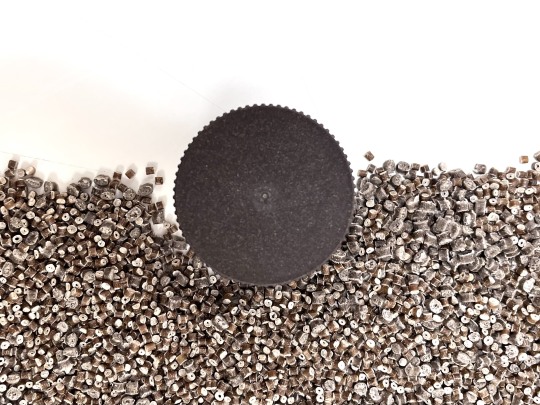
2. Rice husk-based polyethylene
Rice husk-based polyethylene is a biobased plastic that utilizes rice husk, a byproduct of rice milling, as a filler material. By incorporating rice husk into recycled polypropylene, this material not only provides a valuable outlet for a waste product but also reduces the reliance on virgin fillers and minimizes the carbon footprint associated with the production of polyethylene. It represents an environmentally conscious solution for sustainable plastic manufacturing.
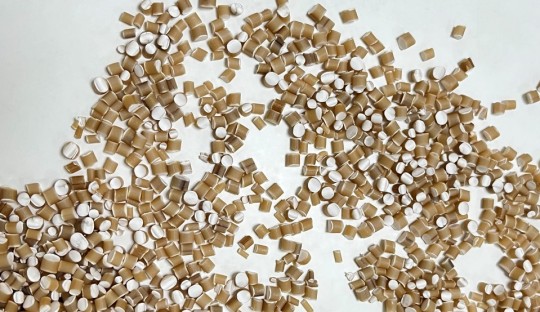
3. Sugarcane Bagasse-Based Polyethylene
Sugarcane bagasse refers to the fibrous residue left behind after extracting juice from sugarcane stalks during sugar production. Instead of being discarded as waste, bagasse can now be transformed into a valuable raw material for producing bio-based polyethylene (PE), offering numerous environmental benefits.
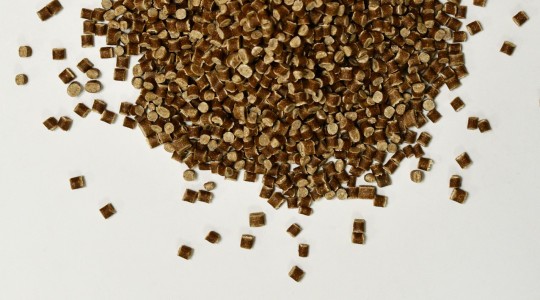
As the industry continues to embrace sustainable alternatives, bio-based polyethylene plays a crucial role in reducing the environmental impact of packaging materials while maintaining functionality and meeting consumer demands.
Learn more about bio-based composites using recycled carbohydrates at: airxcarbon.com
0 notes
Text
Bio-Based Polyethylene: Paving the Way for a Sustainable Tomorrow
In an ever-changing world, the search for sustainable alternatives to traditional materials has become paramount. A revolutionary solution that has gained significant attention is bio-based polyethylene, offering a greener and more eco-friendly option compared to its conventional counterpart.
This article aims to explore the realm of bio-based polyethylene, delving into its benefits, production process, applications, and its pivotal role in shaping a sustainable future.
Understanding Bio-Based Polyethylene
What is Bio-Based Polyethylene?
Bio-based polyethylene is a type of polyethylene derived from renewable sources, such as sugarcane, corn, or other biomass feedstocks. While it shares similarities with traditional polyethylene in terms of properties and chemical structure, bio-based polyethylene stands out for its reduced carbon footprint and enhanced environmental friendliness.
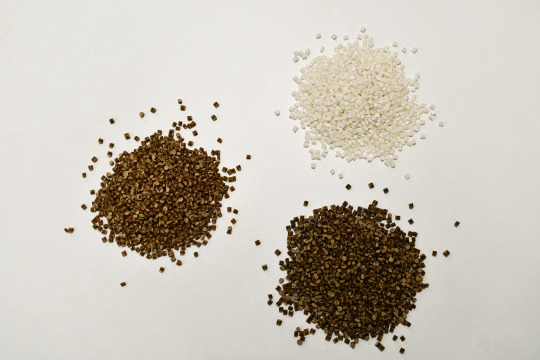
Differentiating Bio-Based Polyethylene from Traditional Polyethylene
The key distinction between bio-based polyethylene and traditional polyethylene lies in their sources. Bio-based polyethylene is sourced from renewable feedstocks, whereas traditional polyethylene is derived from non-renewable fossil fuels, predominantly petroleum.
The Rise of Bio Polyethylene Resin
The Production Process
Sourcing Renewable Feedstock
The production of bio-based polyethylene commences with the procurement of renewable feedstocks, such as sugarcane or corn. These feedstocks are carefully chosen based on their high biomass yield and their suitability for conversion into bio-based ethylene.
2. Conversion into Bio-Based Ethylene
Next, the selected renewable feedstock undergoes a process of conversion into bio-based ethylene. This step typically involves fermentation or chemical conversion techniques, depending on the chosen feedstock.
3. Polymerization and Production of Bio-Based Polyethylene
Once bio-based ethylene is obtained, it undergoes polymerization to yield bio-based polyethylene. The resulting material possesses similar characteristics to traditional polyethylene, making it versatile for a wide range of applications.
Advantages of Bio-Based Polyethylene
Reduced Carbon Footprint
One of the primary advantages of bio-based polyethylene is its significantly reduced carbon footprint. Derived from renewable sources, it helps mitigate greenhouse gas emissions and decreases our reliance on fossil fuels.
2. Renewable and Biodegradable Nature
Bio-based polyethylene is renewable and biodegradable, making it a sustainable alternative. It contributes to the circular economy by reducing waste and dependence on non-renewable resources, while its biodegradable nature ensures minimal environmental impact at the end of its life cycle.
3. Resource Efficiency
Bio-based polyethylene offers improved resource efficiency. By utilizing renewable feedstocks, it helps conserve natural resources, while its biodegradability ensures minimal environmental impact at the end of its life cycle.
Applications of Bio-Based Polyethylene
Packaging Industry
The packaging industry is a significant consumer of polyethylene, and bio-based polyethylene finds extensive use in various packaging materials such as bottles, containers, films, and bags. Its eco-friendly nature makes it an attractive choice for companies committed to sustainability.
2. Automotive Sector
In the automotive sector, bio-based polyethylene can be utilized in a wide array of applications, including interior components, upholstery, and exterior parts. It provides lightweight and durable alternatives, contributing to fuel efficiency and reducing environmental impact.
3. Construction and Infrastructure
Bio-based polyethylene also holds promise in the construction and infrastructure sector. It can serve as a sustainable option for pipes, insulation materials, and other building components. Its properties make it suitable for enhancing energy efficiency and reducing environmental footprint in construction projects.
Bio-based polyethylene Recommendation
1. Coffee-based Polyethylene
Coffee-based Polyethylene is a bio-based plastic that incorporates coffee grounds, offering a unique and sustainable approach to plastic production. By utilizing coffee waste as a valuable resource, it not only reduces waste but also enhances the properties of the plastic material.
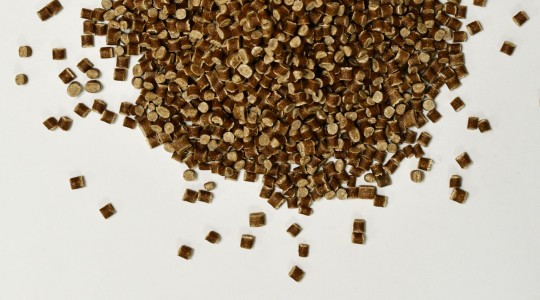
2. Rice husk-based polyethylene
Rice husk-based polyethylene is a biobased plastic that incorporates rice husk - a byproduct of rice milling, as a filler material. The utilization of rice husk in recycled polypropylene not only provides a valuable outlet for a waste material but also reduces the need for virgin fillers and reduces the carbon footprint associated with the production of polyethylene.
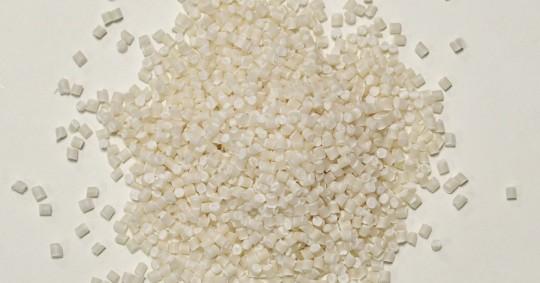
Bio-based polyethylene presents an eco-friendly alternative, paving the way for a sustainable tomorrow. Its renewable nature, reduced carbon footprint, and diverse applications make it a compelling choice across industries.
By embracing bio-based polyethylene, we can actively contribute to a greener future and effectively address the environmental challenges we face today.
Learn more about bio-based composites using recycled carbohydrates at: airxcarbon.com
1 note
·
View note